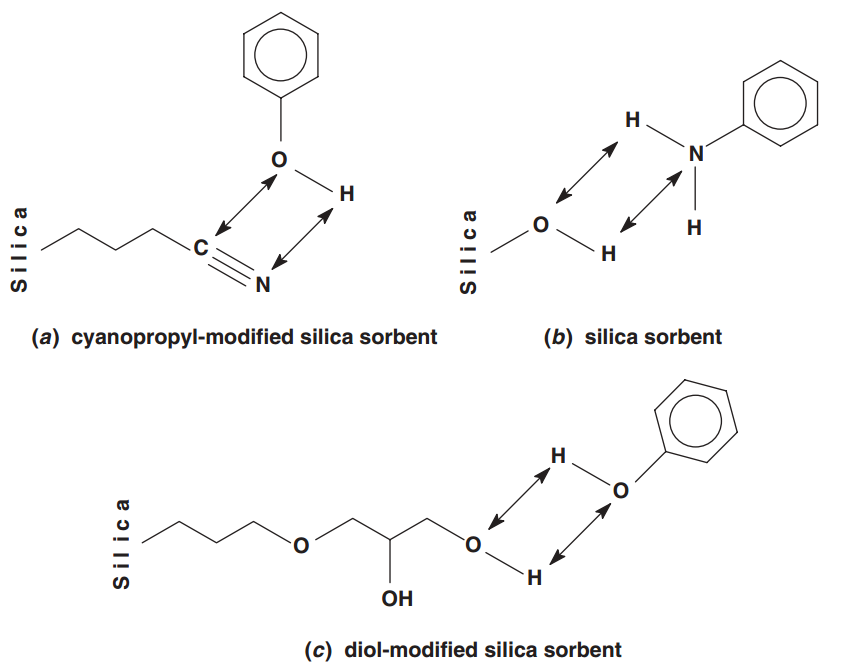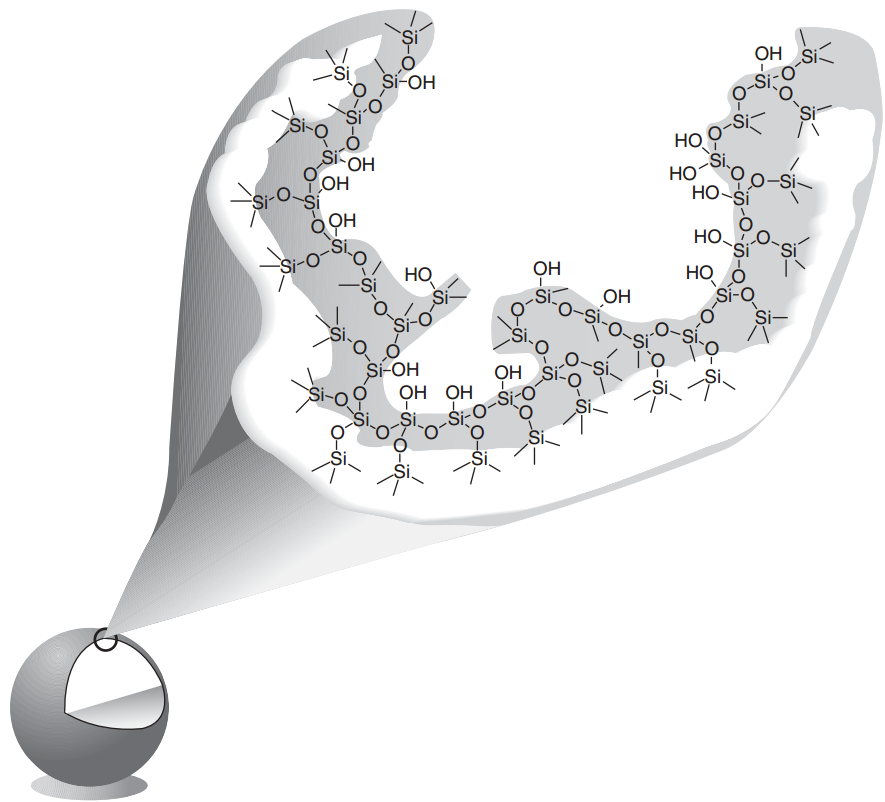


 علم الكيمياء
علم الكيمياء 
 الكيمياء التحليلية
الكيمياء التحليلية 
 الكيمياء الحياتية
الكيمياء الحياتية 
 الكيمياء العضوية
الكيمياء العضوية 
 الكيمياء الفيزيائية
الكيمياء الفيزيائية
 الكيمياء اللاعضوية
الكيمياء اللاعضوية 
 مواضيع اخرى في الكيمياء
مواضيع اخرى في الكيمياء
 الكيمياء الصناعية
الكيمياء الصناعية |
Read More
Date: 18-4-2017
Date: 5-4-2016
Date:
|
Polar Sorbents
The earliest applications ofchromatography, a term coined by Tswett I 1906, used polar sorbents to separate analytes dissolved in nonpolar solvents. Using light petroleum as the nonpolar mobile phase, Tswett separated a colored extract from leaves using column chromatography on a polar calcium carbonate column. The alternate system, in which the sorb ent is nonpolar while a polar solvent is used, was not used in chromatogram phy until the late 1940s to early 1950s.
Howard and Martin introduced the termreversed-phaseto describe separation of fatty acids using solid-supported liquid paraffin or n-octane as nonpolar stationary phases that were eluted with polar aqueous solvents. At that time, these systems appeared to be ‘‘reversed’’ to the ‘‘normal’’ arrangement of polar stationary phases used with less polar eluents. Although reversed-phase applications outnumber normal-phase chromatographic applications today, the nomen clature still applies.
The most common polar sorbents used for normal-phase SPE are silica (SiO2)x, alumina (Al2O3), magnesium silicate (MgSiO3 or Florisil), and the bonded silica sorbents in which silica is reacted with highly polar func tional groups to produce aminopropyl [(SiO2)x-(CH2)3NH2]-, cyanopropyl [SiO2)x-(CH2)3CN]-, and diol [(SiO2)x-(CH2)3OCH2CH(OH)CH2(OH)]- modified silica sorbents (Figure 1.1). Polar SPE sorbents are often used to remove matrix interferences from organic extracts of plant and animal tissue.

Figure 1.1. Interactions between analytes and polar sorbents via dipolar attraction or hydrogen bonding.

Figure 1.2.Representation of an unbonded silica particle.
The hydrophilic matrix components are retained by the polar sorbent while the analyte of interest is eluted from the sorbent. The interactions between solute and sorbent are controlled by strong polar forces including hydrogen bonding, dipole–dipole interactions, π–π interactions, and induced dipole–dipole interactions.
Porous silica (Figure 1.2) is an inorganic polymer (SiO2)x used directly as a sorbent itself and for the preparation of an important family of sorbents known as chemically bonded silicas that are discussed later. Silica consists of siloxane backbone bridges, aSiaOaSia, and silanol groups, aSiaOH. Colin and Guiochon [85] proposed that there are five main types of silanol group sites on the surface of a silica particle, depending on the method of preparation and pretreatment of the silica, including free silanol, silanol with physically adsorbed water, dehydrated oxide, geminal silanol, and bound and reactive silanol. Porous silica consists of a directly accessible external surface and internal pores accessible only to molecules approximately less than 12,000 Da. Pesek and Matyska have reviewed the chemical and physical properties of silica.
Silica particles used for SPE sorbents are typically irregularly shaped, 40 to 60 mm in diameter. Silica particles used for sorbents in high-performance liquid chromatographic (HPLC) columns are generally spherical and 3 to 5mm in diameter. Due to the di¤erences in size and shape, SPE sorbents are less expensive than HPLC sorbents. Much greater pressures are required to pump solvents through the smaller particle sizes used in HPLC.



|
|
|
|
لصحة القلب والأمعاء.. 8 أطعمة لا غنى عنها
|
|
|
|
|
|
|
حل سحري لخلايا البيروفسكايت الشمسية.. يرفع كفاءتها إلى 26%
|
|
|
|
|
|
|
جامعة الكفيل تحتفي بذكرى ولادة الإمام محمد الجواد (عليه السلام)
|
|
|